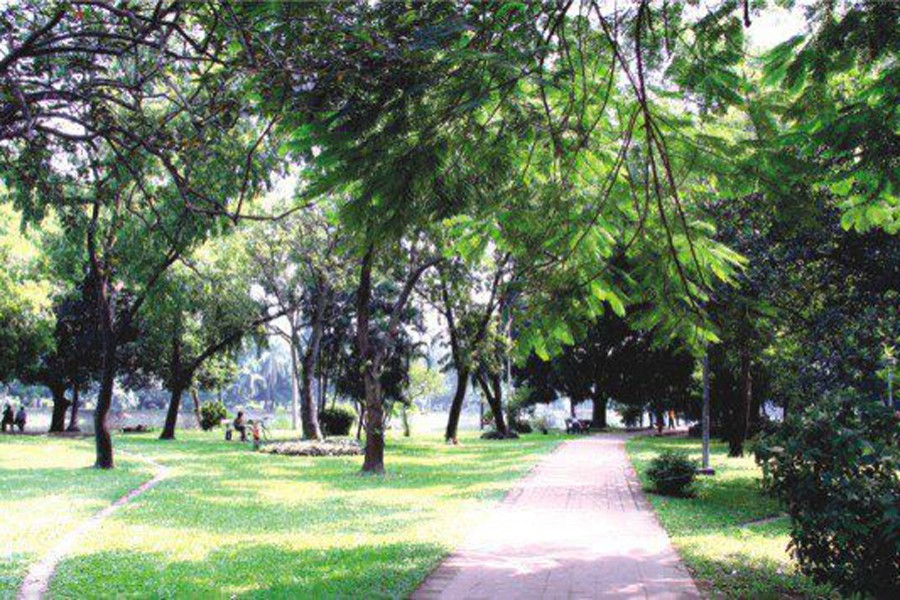
Published :
Updated :

Britain's Royal Botanical Garden, Kew-famed Robert Louis Proudlock would not have been amused had he known the botanical anarchy in Ramna Park he designed. A landscape designer, he designed Ramna Park and had the foresight to select plants and trees for what is in effect the lungs of the rapidly urbanised and vastly degenerated Dhaka. A study carried out last year by the Centre for Environmental and Geographic Information Services (CEGIS), a government research body, finds that alien and inimical trees have outnumbered indigenous varieties.
Arboriculture was never a strong point here. Or else, who would welcome trees like eucalyptus and rain trees which are known for their hostility to trees and plants all around them. One simple observation may suffice to show how these two trees can be harmful for local plants and trees. For example, no grass or creeper grows under a rain tree. Then a eucalyptus tree is so aggressive that it sends its roots deeper than other trees to suck underground water as much as can provide sustenance for twenty large local trees.
The study team has rightly observed that foreign trees of similar varieties have been planted repeatedly over the years with no respect for eco-friendly issues. There are trees on which not even birds sit, let alone nest. No wonder that those who were responsible for such hostile additions to the botanical varieties had little knowledge of arboriculture.
Apart from the botanical anarchy, other development works carried out by the Public Works Department have proved a grave threat to the park's environment. As many as 116 structures including concrete pavements, benches and boundaries around trees have been built rather indiscreetly. The length of streets in the park in total is 10.36 kilometres. Add to this a restaurant that is commercially run and one can see that man and Nature are on a collision course here. In the south-eastern part, the extension of a building encroaching upon the park also does not help the cause. In total, 62 per cent of the park is under cover of trees and 11 per cent under infrastructure.
Notwithstanding the negative developments, Ramna Park has still been trying to provide a far more congenial ambience than its city centres to people visiting there. In the summer the temperature here is at least two to three degree cooler than in Motijheel or Shahbagh.
With 4,562 trees, more than 800 birds of 60 different species including myna and parrot, the park may not be idyllic at its best but has a soothing influence on visitors there. The birds could not leave the park perhaps because there is hardly any other place to go. What is revealing is that there are 14 species of butterflies. Like the birds, these beautiful creatures have made the park their home because it somehow provides them a kind of sanctuary. In the lake there are 14 types of fish, mercifully all of them of the local species. However, heavy pollution of the lake's water has not been helpful for survival and growth of the fish.
The CEGIS has made a number of suggestions for reviving the original character of the park. Rightly, the restaurant must not be there at all. Visitors have to be strictly warned not to throw away packets or other refuse here and there but carefully put those in dustbins. Unnecessary infrastructure has to be demolished. And the park should be left off-limit to any visitor on a day every week.
However the most radical measure that will be called for is to fell the alien and hostile trees and rearrange the plantation of local varieties. A well calculated measure has to be undertaken to do this. Over a period of say, 10 to 15 years, the foreign and harmful trees will have to be replaced by indigenous varieties known for their balmy effect on the environment.


 For all latest news, follow The Financial Express Google News channel.
For all latest news, follow The Financial Express Google News channel.